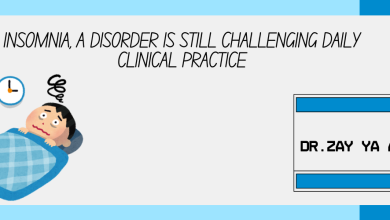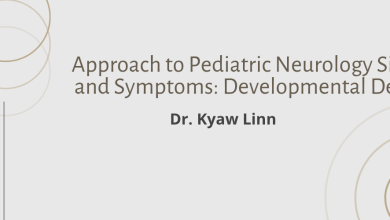Diagnostic Reasoning

This article: Diagnostic reasoning-an endangered competency in Internal Medicine Training (Ideas and Opinion)by A.J. Simpkin, J.M. Vyas, K.A. Armstrong) from which extracts have been quoted, is very much relevant to present day clinical training being given at institutes of higher medical education and their teaching hospitals and clinics in Myanmar. It says that: “Diagnosis is one of the most important tasks performed by internal medicine physicians, and diagnostic reasoning is perhaps the most critical of an internist’s skills…..The basis of the diagnostic process is the patient’s medical history, the physical examination, and an ever-increasing array of diagnostic tests as well as the patient’s course over time”. Unfortunately, in Myanmar now, the house-surgeon/intern has had less than minimal exposure and hands-on experience to these basic features of diagnosis and has acquired only very rudimentary skills during undergraduate training. Knowing full well his/her own important deficiencies he/she tries to make-up, but has to compete with post-graduates at the teaching hospitals for access to patients. Also, in the absence of clinical clerks in the wards, the intern may have to waste time doing ‘fetch and carry’ jobs for lab reports, blood samples, X-ray reports.
As regards the type of training received, work- hour patterns and postings according to hospital needs rather than the trainee’s may have reduced the likelihood that an intern will be able follow a patient throughout the diagnostic process and experience the feed-back loop critical for improving diagnostic reasoning.
Pressure for bed-space and expediency may have contributed to a mentality of
–“Test first, think later “or even-” treat first, think later”
Clinical rounds may therefore focus more on management plans rather than diagnostic reasoning and uncertainty.
The Feed-back loop
The emergency department, often the gateway to the medical teaching services is pushed to assess, stabilizes and package patients with an admitting diagnosis as quickly as possible. Too often this diagnostic hypothesis becomes a definitive label for the patient during his or her subsequent journey through hospital depriving trainees in the wards of valuable diagnostic reasoning experience and giving ample opportunity for confirmation biases and misdiagnosis.
Integration and diagnosis
The role of the Consultant Physician/Surgeon/Chief of the respective Clinical Service of the teaching hospital, who makes clinical/bed-side rounds on admission day and subsequent days, is so very important as analyzer and “INTEGRATOR” who has to put together all the varied, fragmented information inputs from the different doctors who have already examined the patient, the results of the various laboratory tests, X ray and other imaging examinations done; and after performing further clinical examination of the patient with his/her sharper clinical acumen and as necessary according to the more comprehensive information gathered, the Consultant runs through the differential diagnoses, and using his/her well experienced diagnostic reasoning power, decides on a diagnosis. The Chief then draws up a management plan for further necessary investigations during the patient’s course of illness in hospital and follow up; and a therapeutic plan like-wise.
The Massachusetts General Hospital from where the authors of this article come, gives the following set of recommendations for re-building the focus on diagnostic reasoning in Internal Medicine training: (i) change the teaching conference and structure of teaching rounds- emphasize the diagnostic process, including uncertainty and the probabilistic nature of clinical reasoning (ii) change the training environment to embrace the diagnostic reasoning process. Embrace curiosity and recognize the importance of words. Hypothesis often may be more apt than diagnosis because it captures the changeable nature of the diagnostic process setting different expectations for certainty. Encourage consideration of alternatives and ‘prospective hindsight'(iii) develop new approaches to assess and monitor competence in diagnostic reasoning. Modify the electronic health record to enable trainees and ward physicians to receive explicit feedback on the outcome of their diagnostic process no matter when the diagnosis is made; allowing feed-back loop and allowing trainees and ward physicians to know whether the patient they discharge has been rapidly re-admitted.
Massachusetts General Hospital Department of Medicine has also implemented a novel, early morning “INTAKE CONFERENCE” where all involved come together and review admissions.
We of the older first post World War II generation are all familiar with the teaching “POST-MORTEM CONFERENCEs”(both pathology and jurisprudence) which we regularly attended every day during Final Part l class and found them very useful and instructive (I am not sure whether they are still being held and attended by undergraduates nowadays).
It is worth considering and experimenting whether an “INTAKE CONFERENCE” similar to Massachusetts General Hospital be held in one of the teaching hospitals in Myanmar
Conclusive Comments
Advantage should be taken in Myanmar Medical Universities of the ongoing and future advances in Information Technology (IT) and use them to experiment and enable teaching/learning procedures that were not possible in the past and at present, and make them more effective and efficient in storing and transferring patient’s data. Diagnostic reasoning is, above all, a logical process which is a function all human minds, and which is done with varying degrees of correctness and rationality of thinking, since the early Greek philosophers and mathematicians (like Aristotle) first recognized them and devised logical rules and procedures.
REFERENCES
(1) Diagnostic reasoning- an endangered competency in Internal Medicine Training (Ideas and Opinion) by A.J. Simpkin, J.M. Vyas, K.A. Armstrong)
(2) A Concise History of Medical Education in Myanmar (1886-2019)by Aung Than Batu with Burmese translation by Aung Than Batu&AungGyi ( published by MAMS Ygn, 2019)
(3) History of Medical Education in Myanmar (1886-2013 ) authored by 22 medical educators. Published in English by MAMS (2016)
(4) The Burmese Way to Medical Research: MAMS Oration delivered and published in English by MAMS, Yangon, 2018
(5) General Practitioners- the Backbone of Health Care in Myanmar: Keynote address by AungThanBatu at MJCMP Symposium (MMA Ygn. 20.Nov 2019)
(6) Telemedicine in Myanmar by AungThanBatu. Myanmar Medical Journal, March 2016. vol 58.No.1
Professor Aung Than Batu
MBBS (Ygn).FRCP (Edin) Emeritus Medical Researcher. (Retd).DGMR; Retd Director, Research & Human Resources, WHO SEA Region






